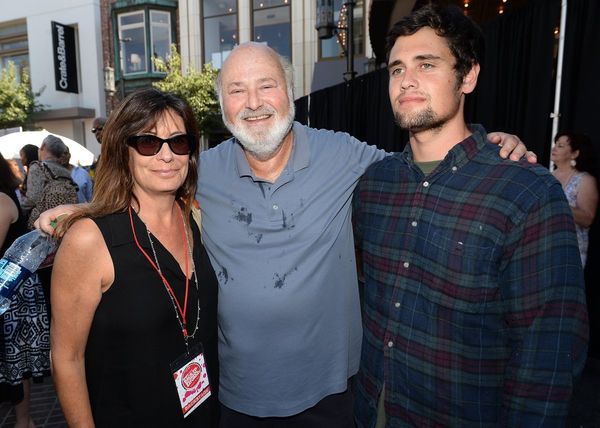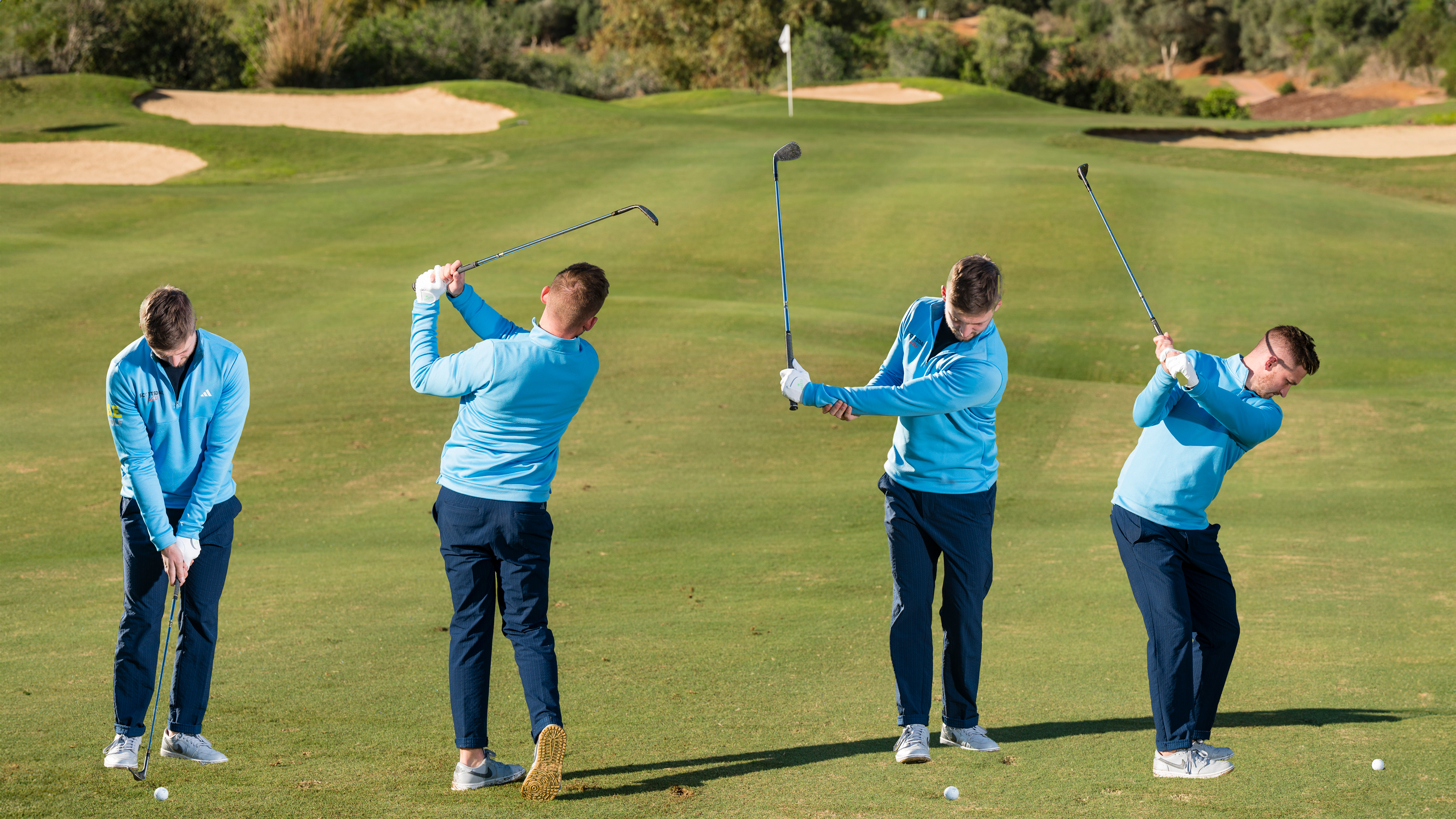
Pitch shots often pose a problem for the average club golfer, undoing all their hard work off the tee and limiting their opportunities to score well around the golf course.
The faults that creep in often arise through misconceptions about the fundamentals of pitch shots in golf and the tempo that is required, which are two things that Golf Monthly Top 50 Coach and PGA Professional Alex Elliott is going to help you with here.
By creating a simple, repeatable process, these 3 simple tips will help get you dialled in from inside 100 yards and avoid some of the most common mistakes amateur golfers make around the greens...
Hit Pitch Shots Better Than Ever Before With 3 Simple Tips
1. The Correct Setup For Pitch Shots
Improving your pitch shots from 70-yards and in is one of the data-proven ways that amateur golfers consistently break 80 in golf, but much of the success actually comes from what you do before you hit the golf ball.
When setting up to hit pitch shots, the ball should be towards the back half of your stance, with around 60% of your weight on the lead foot. My gloved hand is also marginally ahead of the ball, creating a slight forward shaft lean.
Start with the perfect neutral golf grip, but slide your hands further down to increase control and feel. Your shoulders should be parallel to the target line, but the feet and hips need to be a little open to keep the low point ahead of the ball.
This will promote the ball-then-turf contact you need for a perfect pitch.
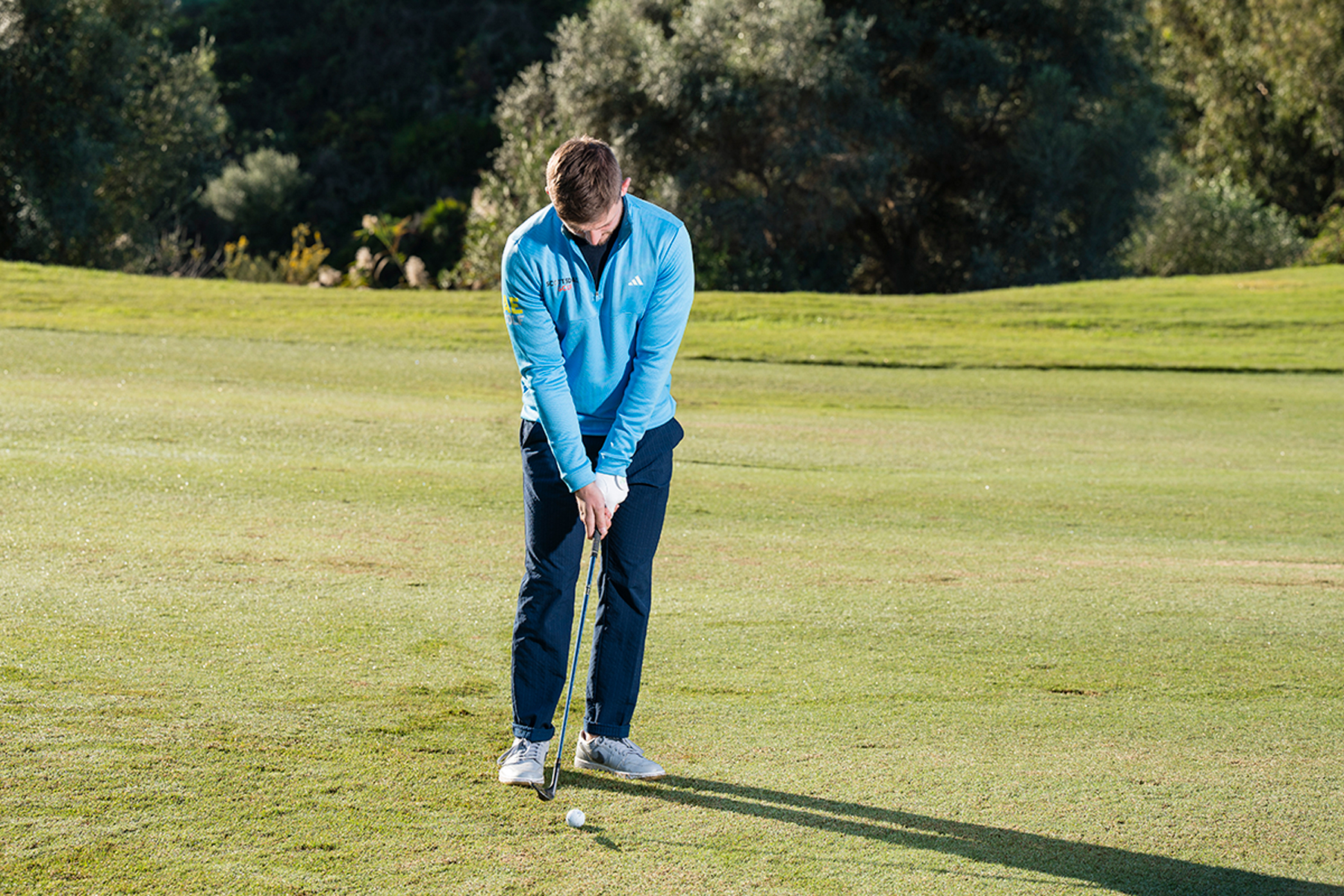
2. Pitch Shot Gravity Drill
When hitting pitch shots gravity is your friend as it really helps you to master the correct tempo. Take the club back halfway and hold your lead arm with your trail hand, as in the image below.
Next, release your arm and allow gravity to hit the shot for you. As you swing through the ball, you should notice that your arm naturally reaches a similar point in the follow-through.
Many club golfers who struggle with pitch shots tend to take the club back and then drastically speed up on the downswing. By practising this gravity drill you should notice increased control and a more consistent tempo.
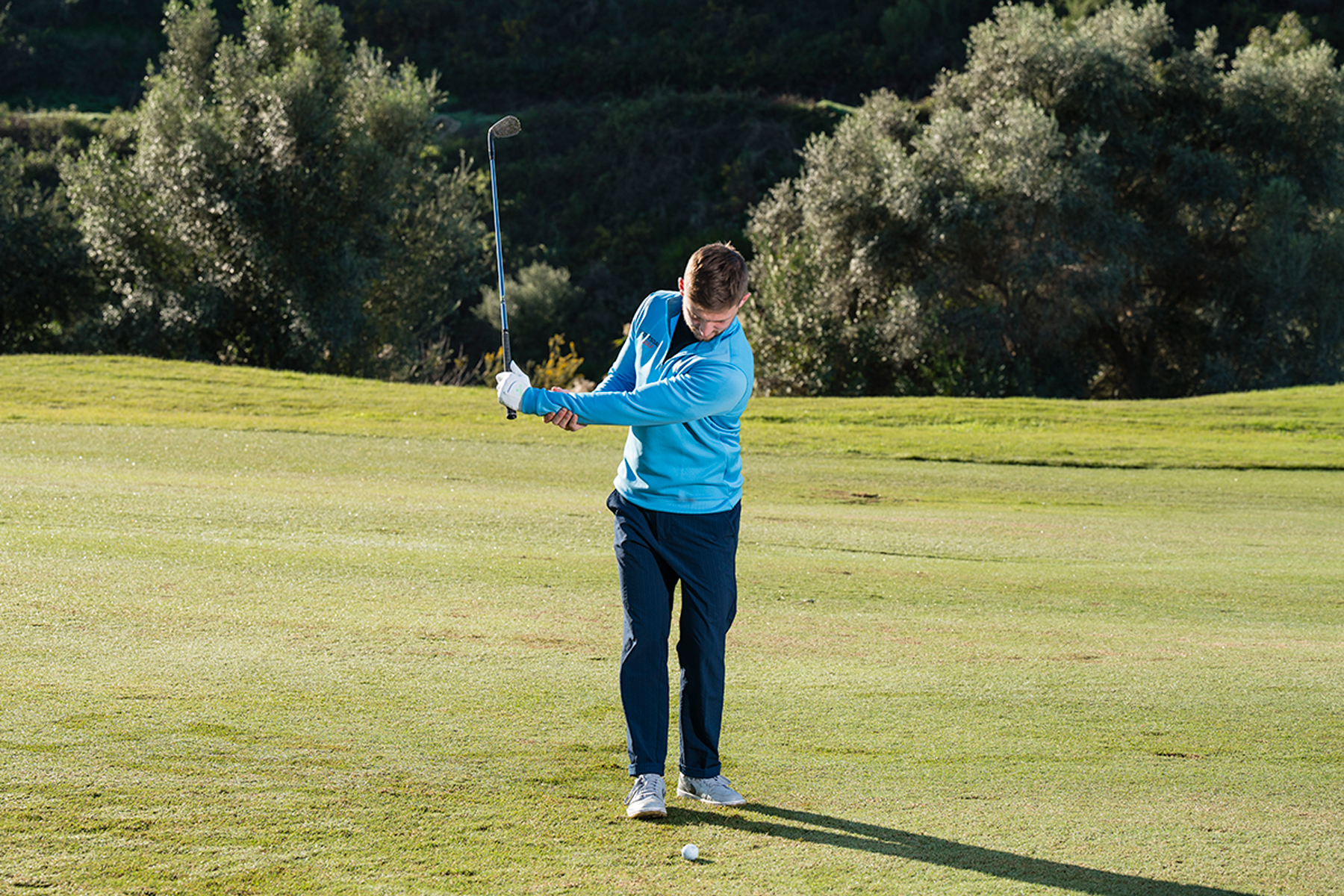
3. Swing Length For Pitch Shots
You may have heard this referred to as a clock face drill, but I prefer the idea of a mirror image determining the length of backswing and follow-through on a pitch.
Let's start with position one, which we will call chest to chest, which you can see in the image above. The image below represents position two – which is shoulder to shoulder for a longer pitch.
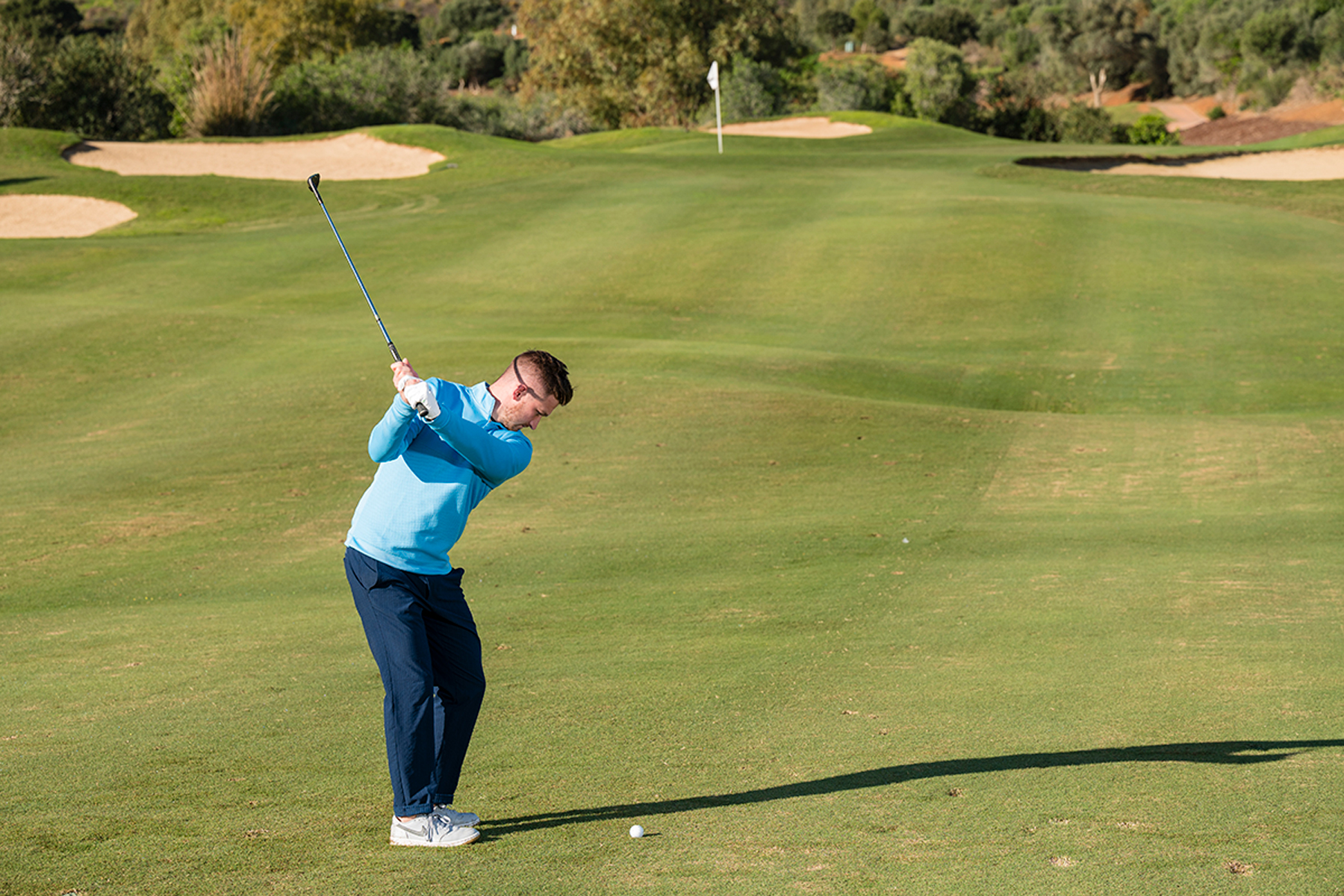
For position two, my hands are level with my trail shoulder in the backswing, so I’d expect them to reach my lead shoulder in the follow-through. Controlling these variables and matching them with the tempo and set-up discussed earlier will soon see you setting up more scoring opportunities.




